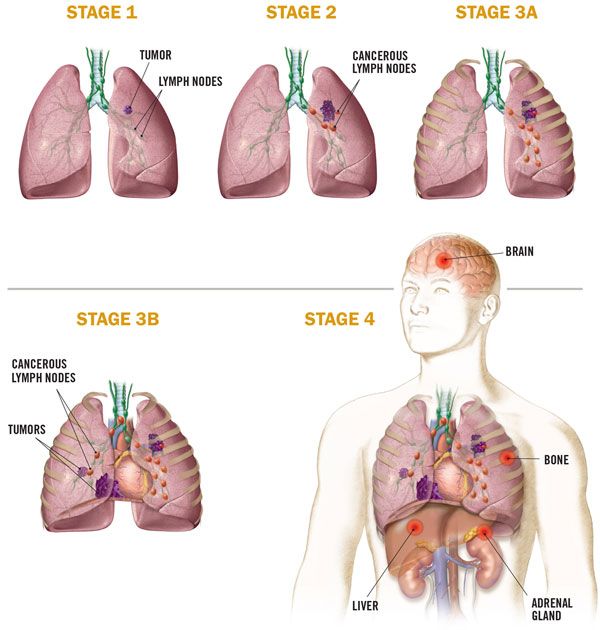Medical Illustration: Non-Small Cell Lung Cancer
Following a lung cancer diagnosis, staging determines the best options for treatment. Many factors are evaluated, including the size of the tumor and the extent of spread.
Following a lung cancer diagnosis, staging determines the best options for treatment. Many factors are evaluated, including the size of the tumor and the extent of spread.

ILLUSTRATION BY ERIN MOOREORIGINALLY PUBLISHED IN “LUNG OVERDUE,” CURE SPRING 2010
STAGE 1:
STAGE 2:
STAGE 3A:
STAGE 3B:
STAGE 4:
Following a lung cancer diagnosis, staging determines the best options for treatment. Many factors are evaluated, including the size of the tumor and the extent of spread.The cancer is small (no larger than 3 cm for stage 1A; up to 5 cm for stage 1B) and has not spread to the lymph nodes.The tumor is up to 7 cm in diameter and may have spread to nearby lymph nodes.The cancer has started to extend into surrounding tissues and structures, such as the lining of the lung and chest wall, and has spread to lymph nodes on the same side of the chest as the tumor.Two or more tumors are present, and the cancer has spread to the lung and lymph nodes on the opposite side of the chest.The cancer has spread to form new tumors in other parts of the body, such as the bone, brain, liver and adrenal gland.
